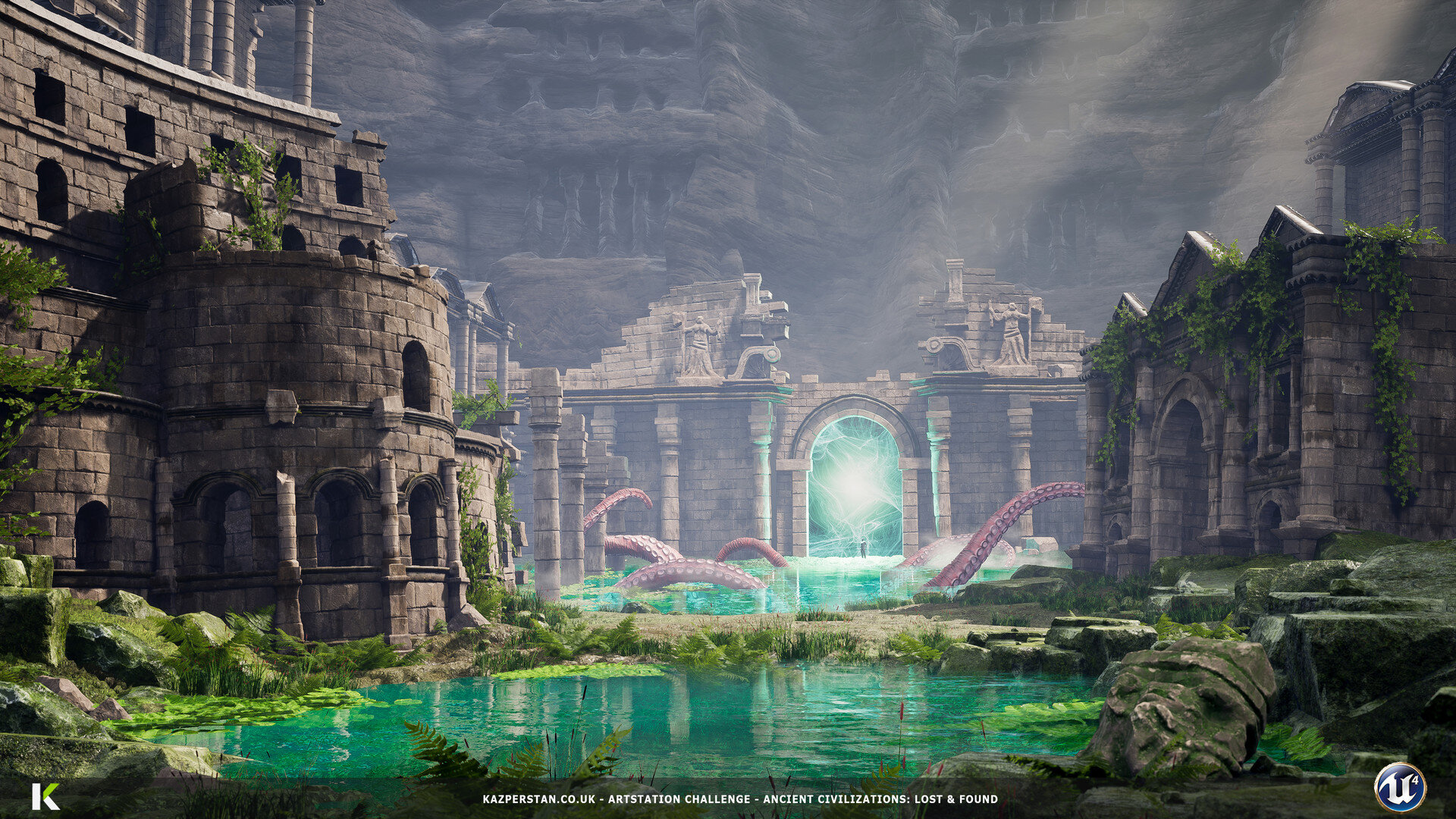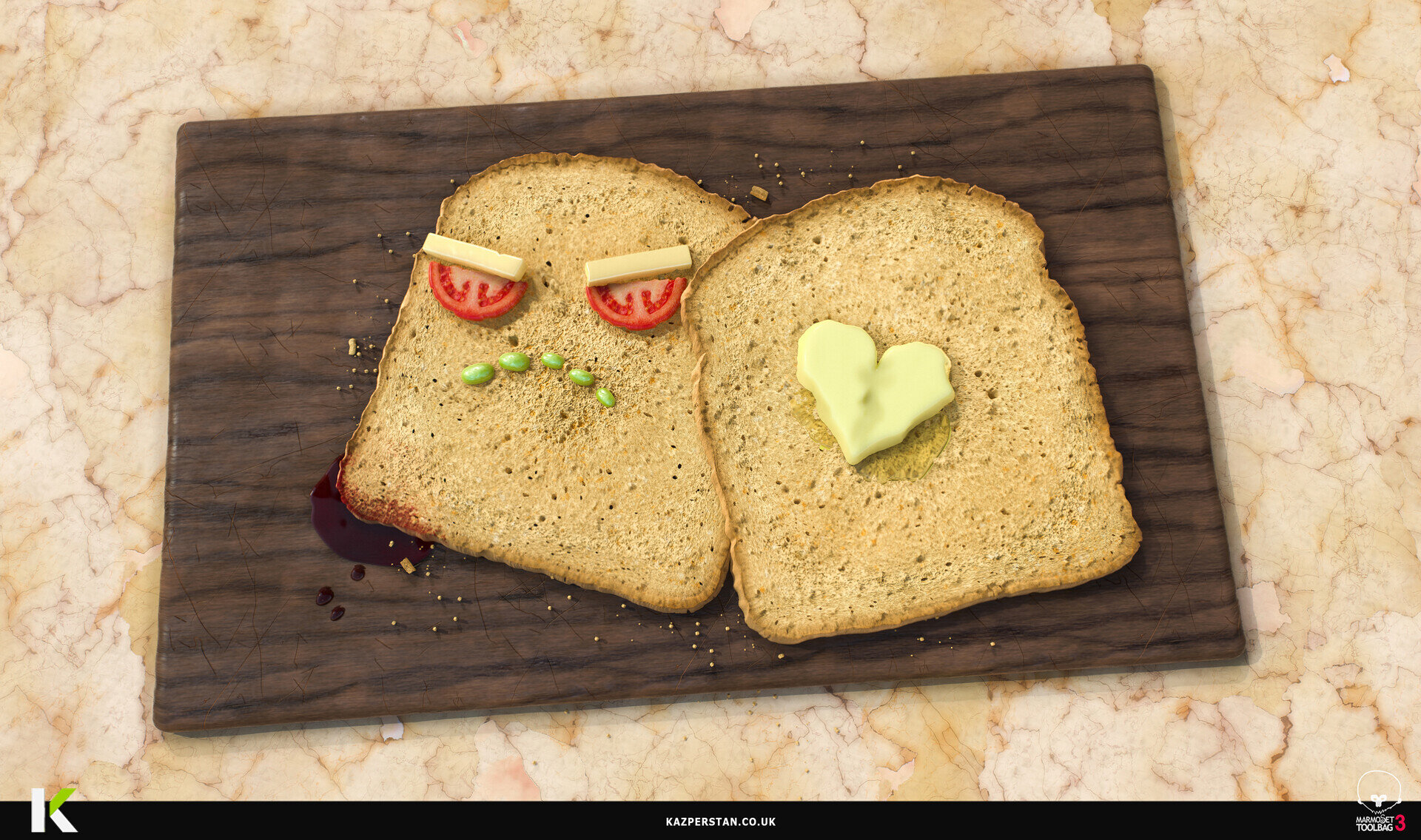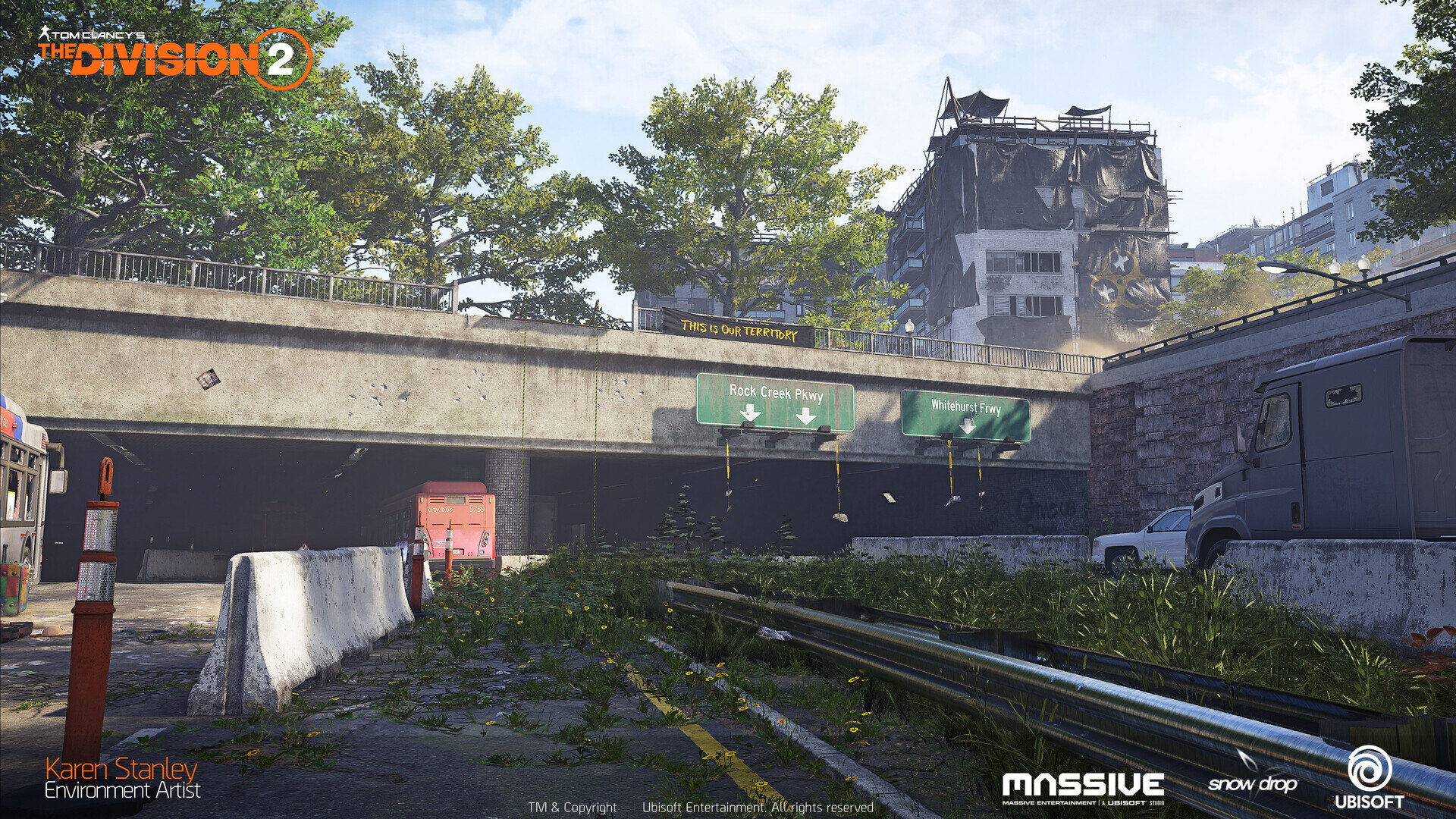KAREN STANLEY - SENIOR ENVIRONMENT ARTIST AND ARTSTATION JUDGE
Karen Stanley has worked in the industry for 6 years and talks about her experiences from doing freelance work and how that helped her with the business side of our industry to working as a Senior Environment Artist at Ubisoft. With insights on what she looks for when hiring and how you can ensure you are on the right path, Karen gives you all of the information you need.
Introduction
Hey, I’m a Senior Environment Artist currently working at Ubisoft in Toronto. I’m originally from London, UK and have worked in games for about 6 years now. I don’t really remember the first game I ever played, but I got into them as I used to spend practically half my childhood life over at my cousin’s house and between drawing, listening to music way too loud and running around like lunatics outside, he would introduce them to me and we would stay up until the early hours of the morning (to my aunts loving despair) playing.
The games that really stuck in my mind from back then for one reason or another is James bond Nightfire on PS2 and the greatest game of all time… STAR WARS SUPER BOMBAD RACING. I think we then got the first household PC from Tesco’s of all places when I was about 14, with the promise of it being for schoolwork. And so instead I started to get into PC gaming.
My dad would randomly bring back bootleg floppy disk games of Doom etc. from his mate down the pub. Bare in mind this wasn’t even the era of floppy disk games... they where very much on CD’s by then but boxed new games on CD was probably too expensive so floppy disk it was! My mum also noticed I was really becoming a computer nerd, but still loved drawing and saw this knock-off Wacom tablet in a local store. I guess she figured it would make a nice birthday present. (Spoiler – it was the best.)
College (age 16-18 schooling in the UK) was where I got into 3D – I took an interactive media course with actually not much idea of what I really wanted to do. All I knew was the fact I liked games, enjoyed art, hated exams and my only other real career idea was to join the RAF. So, at college I got introduced to 3D programs and the best part, met some great encouraging friends too. I’d also managed to save up some money around then to get a PS3 – the art of Killzone and Uncharted really drilled deep my interest in 3D art for games, specifically as the college course was very broad and covered many types of industries in the realm of media.
Towards the end of college and the start of university I found the Polycount forum. That forum together with the Game Art course I took at university helped me find my love of environment art and then I started to really specialise in that! And again, the most important part, I also met a bunch of great friends in real life thanks to that forum and also university life.
Lots of studying, a few freelance gigs and a couple of studios later, here we are 6 years deep into making pretty environments for a living!!
When working with a team what do you find the most helpful traits for junior to mid level artists?
A willingness to get stuck in and try stuff out of your comfort zone – whether that’s art wise or tech. Some of the best juniors and interns I’ve worked with just ask lots of questions, try things out and bring their own ideas to the table. Also realise that ownership does not mean “I work on this alone”. Ownership means you are just responsible for seeing something completed to the end however you see fit, using the resources available to you and your team. Don’t drown in a sea of Jira’s, speak up and talk to your managers and co-workers when your plate feels a little too full, they are there to help.
My one pet peeve with some parts of the industry is when juniors and interns are given ONLY the menial tasks to do. If you want good intermediates and seniors, it’s also important to train the younglings for the future! This means giving them some ownership and challenges whilst guiding them and making sure they GO HOME to – make work exciting and know that juniors are valued artists to, not just cheap labour. I’ve been lucky to be part of studios that have seen the value in treating juniors / interns as a fully fledged member of the art force and I hope to see that continued across the industry.
Would you be able to do a breakdown on the composition of one of your environments in terms of lighting, flow and colour?
Sure! This was a quick weekend piece I did. Because I knew it was going to be a fast time constrained one, I just really wanted to use framing to cut down on the set dressing and wandering eyes because I was only going to use one major focal point asset. I went for a very simple central focus point and placed the kayak right there, with the paddle running parallel to that centre line. This along with the bright yellow against the blue of the water, it just makes it super easy to look at and stand out.
The landscape is then used to give a directional diagonal framing, a bit like blinkers on a horse, to just subtly make sure to focus on that kayak.
How do you scope a project when you are a beginner (eg. how to work on a smaller outdoor scene, but keep it interesting)?
The biggest common mistake I see (and I’ve been guilty of it myself) is treating every prop in a scene like a hero prop. You don’t need to spend 40 hours on a crate that is right at the back and out of any kind of compositional focal point – you could spend that 40 hours outside, in the sun, instead.
Block out, stay in block out for as long as possible until it looks as good as its going to get without actual props. Don’t care to much about small details, just figure out what is important to your scene and then focus on those assets instead. Bash out the rest so it doesn’t look out of place and then you can start looking at the smaller details like trash on the ground, dust etc…
What are some of the environment art challenges unique to multiplayer games? What should be kept in mind?
Players are unpredictable – you can guide them as much as you like but sometimes, they just go off and do their own thing – and I think we should let them as much as we can! Now imagine trying to keep not just one player on track and focusing objectives, but 4, 20,100… now imagine trying to keep all those players from getting lost by using your art!
Art schools tend to teach traditional composition in the format of a directed camera and a 2d screen – but for games you really must think about 360 composition. If a player goes off track in a huge open world, or in a fast-paced shooter with lots of quick dying and rotating respawn points - you need landmarks to remind them where to go and where they are when they decide to get back on track.
Humans by instinct use landmarks, but try pulling yourself into a different mindset whilst playing a few different types of games and see if you can spot the landmarks that are helping you re-orientate yourself, especially in smaller multiplayer maps.
Do you do anything to start your day modelling such as a warm up?
100 push ups and 100 sit ups! Perfect warm up! No – If I’m modelling, I usually just start by grabbing reference and then figuring out the objects dimensions etc. I don’t really model for the sake of modelling these days, I usually already have a goal in mind, or an objective given from work and just want/need to make the thing. Every time you make something new, you usually learn something new as well.
What are common technical limitations and how do you avoid or overcome them?
It really depends on the platform you are targeting – each one has its pros and cons. Usually in a studio setting you’ll be working with technical artists and engine programmers to solve issues you come across. Staying flexible and getting the tech guys involved early in the things you build will always help alleviate issues down the line. Just be prepared that sometimes the best solution is to break out the delete key, so don’t be precious! Your art might look great, but if no one can play it because it runs at 1fps, what’s the point.
Most of the hardware you’ll be targeting these days have nice budgets – even mobile! You just need to work out what kind of game you are making and what parts of that game needs the bigger share of that budget pie.
When working with Level Designers what do you find is the best approach to provide or receive feedback and changes either artist to designer or designer to artist?
I know it’s hard to leave that comfy ergonomic masterpiece of an office chair – but get up, go and talk to them, work it out together. Honestly the most fun part of game art is working with Level Designers and putting gameplay to art. So have fun and talk to each other about your work.
What do you do to help prepare scenes or objects for the texture artists?
Luckily for most of my career that’s meant preparing it for myself – or if I’m in level art mode its usually borrowing from already finished assets.
For objects, make sure they are in metrics and work with gameplay and that the placeholder shape is representative of the object. Keep your source files neat and tidy, remember you probably won’t be the only one opening this file. Then make sure you do whatever your pipeline requires admin-wise properly to get the asset to the right person to finish!
If you were starting your career from day one over what would you do and where would you focus? What would you tell younger Karen?
I’d make sure not to cause a time paradox and stay well away from baby Karen! Honestly, I wouldn’t change much, even the bad stuff led me to a good place in the end. I love what I do, it was a lot of hard working getting there and I made some good friends along the way. So, I wouldn’t want to force baby Karen to change focus for the chance of a tiny bit more success or money at the expense of not meeting those people. Plus! Never a time like the present to learn something new if you feel like you should have done it all those years ago.
With the growing popularity of procedural workflows such as Houdini how do you think the job of an Environment Artist is changing?
Our jobs are always changing, it’s part of being in the tech and entertainment sector! I’m not a believer in the fear of robots and procedural systems coming to steal our jobs because procedural / automated ways of building games have already been around for a decade – yet the demand for environment artists has increased globally. All it’s done is allow us to free up time from menial tasks and be more creative! I mean I can’t even remember the last time I manually packed UV’s or made LODs because automated packing and LOD tools have gotten so good now. We must learn to work with our robot overlords and leverage their abilities.
I think the people who may have some fear around automation are those who have hyper specialised themselves into one very specific workflow and skillset. There is a fine balance to walk between being too generalised (i.e your CV saying, “I do concept and characters and props and VFX and and and and” etc.) and then getting yourself pigeonholed into one very specific task, like only making crates.
Environment art leans towards a bit of generalisation anyway, being the person in the studio who can set dress when asked, make foliage when asked, make some textures etc, is super valuable! Even more so when tied with the ability to pair it with procedural systems and create tools for other people to use! The most important thing for an Environment Artist is the ability to bring a full scene to completion and make sure it runs in frame rate– doesn’t matter if a robot helped you do it.
What was it like being an Artstation challenge host? How were you selected and what were your responsibilities?
It’s good fun! I like the fact its open to anyone to participate – It ranges from the super pro’s stretching their art legs, to people who are new to the world of game art and wanting to learn how its done! We get to watch people grow as well when they return for new challenges.
Most of the time we spend trying to give as much feedback as possible as well as making sure people are on brief. Over time as the challenges have grown though, people have been good at feedbacking each other and fostering a really nice atmosphere of pushing each other forward!
For artists just starting in the realm of 3D what do you think are the most important concepts to learn and any tools/software you would recommend learning?
Tools are easy to teach, so don’t fret too much over which engine, which 3d software too much. Just pick one that is affordable to you and is generally in the realm of having industry standard features and start getting familiar with it all.
Art is the hard part! Design, composition, lighting, colour theory – these are going to be things that need study, but also trial and error of just trying and trying again until it clicks and becomes muscle memory.
The most important thing though is to have fun! The first thing I ever tried to make in 3D was a helicopter (below)... that’s a terrible, complicated thing to try and make for your first 3d model, but it was fun, and at that point so early on, that’s all that matters.
What skills do you find most frequently lacking for artists trying to get their first job? How can they improve or learn these skills?
It’s like we mentioned earlier on with the hyper specialisation – there are a lot of jobs open for environment artists / level artists – but most students tend to graduate with props portfolios or only foliage or only materials which is fine if that’s what you really really want to do, but if you apply for an environment art position I can’t hire you because I can’t tell if you know how to make whole scenes, or if you’ve learnt anything about budgeting or how engines and building a game actually work.
Environment art is very much in the trenches working with many departments to build the game rather than just sitting in the corner making portfolio shots. Creating scenes inside editors and using those tools shows me that’s what you want to do, and you are on track to be a great junior hire!
I’m not expecting you to build an entire game level on your own or anything – just build scenes! Get familiar with the tools and processes it takes to do that.
What was the biggest adjustments for you when you started in the Industry? What was the most important thing you learned in your first year?
Learn how to do business… I started off as a contractor, a lot of early gigs for 3d artists are contract work and I had to learn quickly that this is a job and I need to manage finances and invoices and taxes and my time is precious. This also meant learning my worth and making sure my rates = a liveable wage! Ask around and do good research on what a junior going rate is for your area – don’t get shafted and just blindly accept offers, there is always room for a good negotiation. At best, you get paid more, at worst you can still accept the original offer.
This is doubly true if you are expecting to move to a new city / country for a job which is very common for our industry.
Any additional tips or advice you would like to share with our readers?
Making games can get stressful, chasing the dream of working at your dream studio can be stressful to. Just remember to try and enjoy yourself along the way! Take breaks, look after yourself. Be kind. We make video games for a living; life could be harder.
What can we be on the lookout from you in the future?
Oh well there is, [NDA] and [NDA] oh and don’t forget about [NDA].
Outro
Thanks for having me! I hope the information was useful and hopefully some of your readers will join the next Artstation challenges and do us proud!
You can follow me on Artstation. <3















